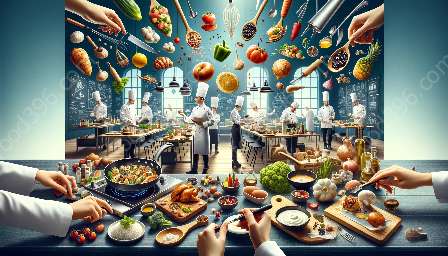Sensory Analysis: A Gateway to Understanding the Nuances of Gastronomy
As the cornerstone of gastronomy, sensory analysis plays a pivotal role in unraveling the intricacies of flavor, aroma, texture, and appearance in food and beverages. In the realm of culinary arts, understanding and harnessing sensory analysis techniques is essential for creating memorable dining experiences.
The Fundamentals of Sensory Analysis
At its core, sensory analysis involves the scientific assessment of the human senses' response to stimuli, especially pertaining to food and beverages. The primary senses involved in sensory analysis are taste, smell, sight, touch, and occasionally, sound. The integration of these sensory elements forms the basis for understanding the holistic experience of food and drink.
Applications in Gastronomy
Integrating sensory analysis into gastronomy allows culinary professionals to refine their craft, elevate dining experiences, and cater to individuals' diverse sensory preferences. By employing sensory analysis, chefs and sommeliers can create harmonious flavor profiles, complementing textures, and visually stunning culinary presentations.
Implications in Food Science
Within the realm of food science, sensory analysis serves as a crucial tool in product development, quality control, and consumer research. It facilitates the identification of sensory attributes, flavor defects, and consumer preferences, contributing to the creation of superior food products.
Culinary Training: Embracing Sensory Analysis
For aspiring chefs and culinary professionals, an in-depth understanding of sensory analysis is imperative. This knowledge equips them with the ability to curate dynamic flavor compositions, evaluate ingredient quality, and fine-tune dishes to perfection. By honing their sensory analysis skills, culinary students can craft innovative culinary creations in alignment with evolving culinary trends.
The Process of Sensory Analysis
Employing a structured approach, sensory analysis encompasses various techniques, including sensory evaluation, discrimination testing, descriptive analysis, and consumer studies. These methodologies enable individuals to objectively assess and interpret sensory information, providing valuable insights for gastronomy, food science, and culinary innovation.
The Influence of Sensory Analysis on Gastronomic Trends
Sensory analysis serves as a catalyst for shaping gastronomic trends by addressing consumer preferences, cultural influences, and emerging flavor profiles. It empowers culinary professionals to adapt and innovate, leading to the evolution of diverse culinary landscapes.
Integration of Technology in Sensory Analysis
Advancements in technology have revolutionized sensory analysis, introducing sophisticated tools such as electronic noses, digital imaging, and data analytics to enhance the precision and efficiency of sensory evaluations. This integration of technology in sensory analysis complements traditional sensory methodologies, contributing to more comprehensive and data-driven insights.
Embracing Sensory Analysis as a Holistic Practice
Ultimately, sensory analysis transcends beyond mere taste testing—it is an amalgamation of art, science, and culture. By appreciating the intricate interplay of sensory elements, culinary professionals can create unparalleled dining experiences that resonate with patrons on a profound level, transforming food and beverage offerings into immersive sensory journeys.
In Conclusion
Sensory analysis forms the bedrock of gastronomy, food science, and culinary training, offering a profound understanding of the sensory dimensions of food and beverages. Its significance in shaping culinary creations, enhancing product development, and influencing gastronomic trends underscores its indispensable role in the realm of culinary arts and food science.

